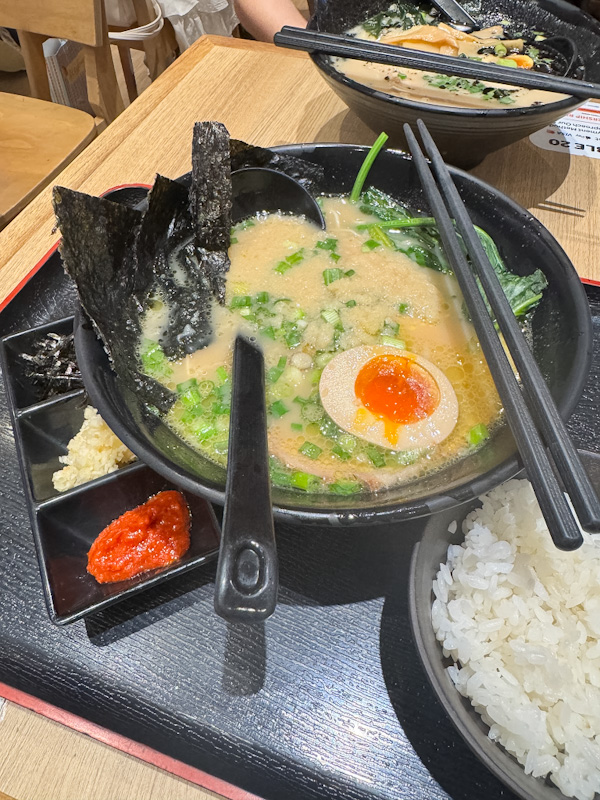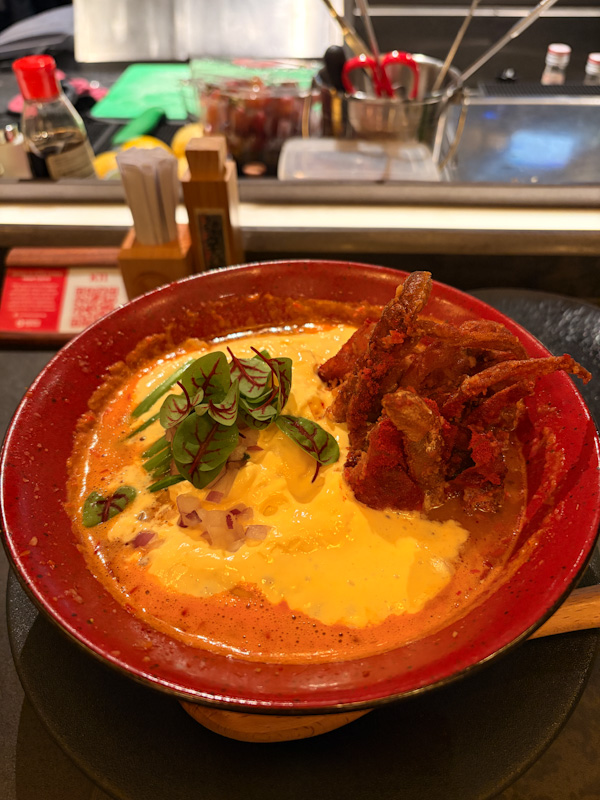WHAT WE ATE
- Shoyu Ramen, 75/100 (14 Sep 2025, Fortune Center)
- Black Gold King Ramen, 75/100 (14 Sep 2025, Fortune Center)
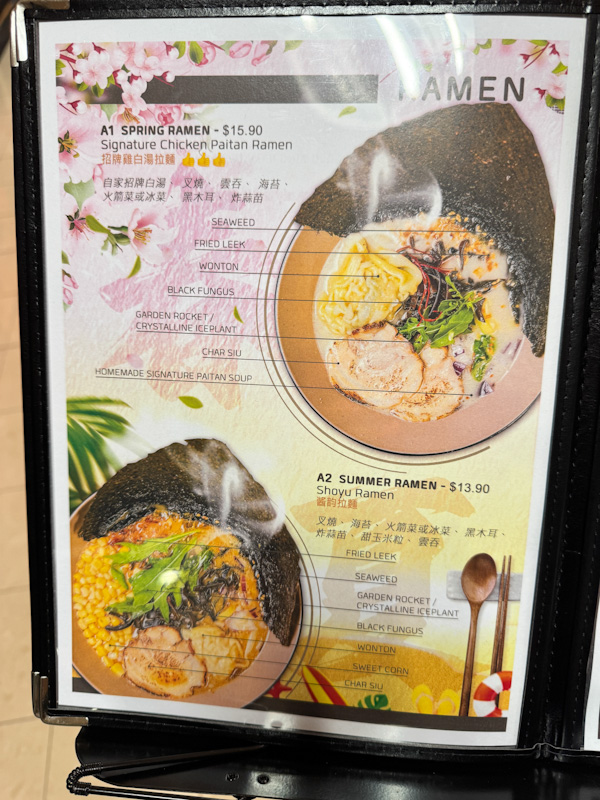
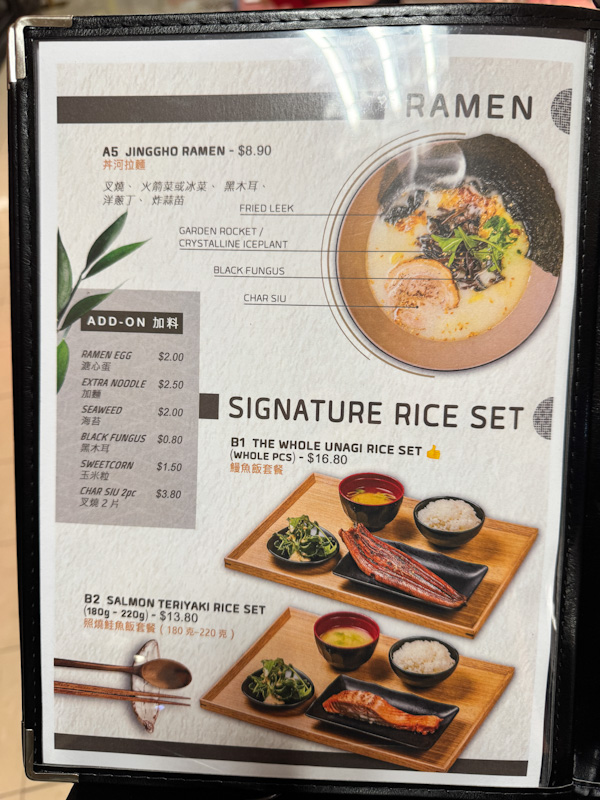
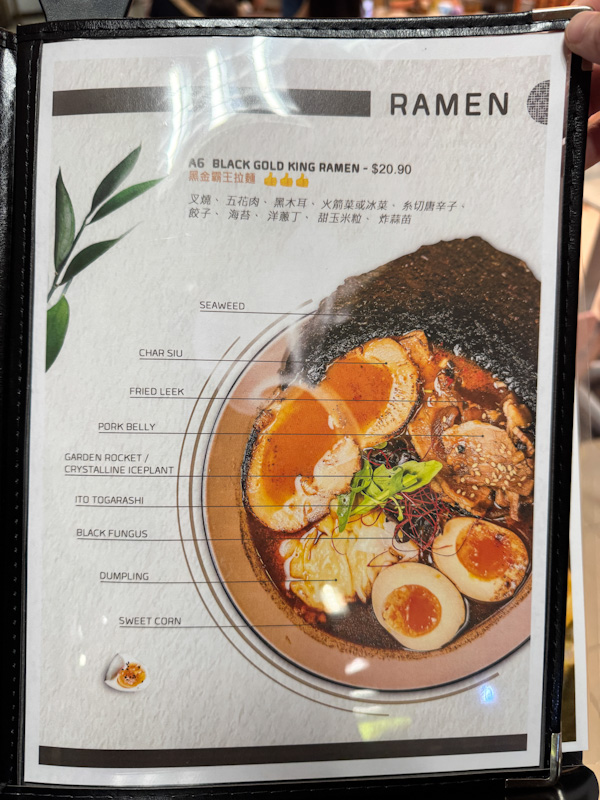
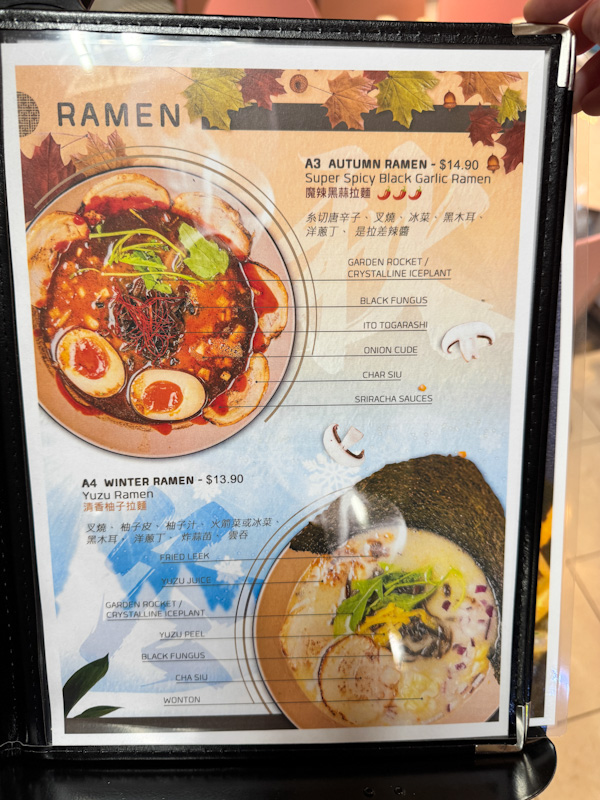
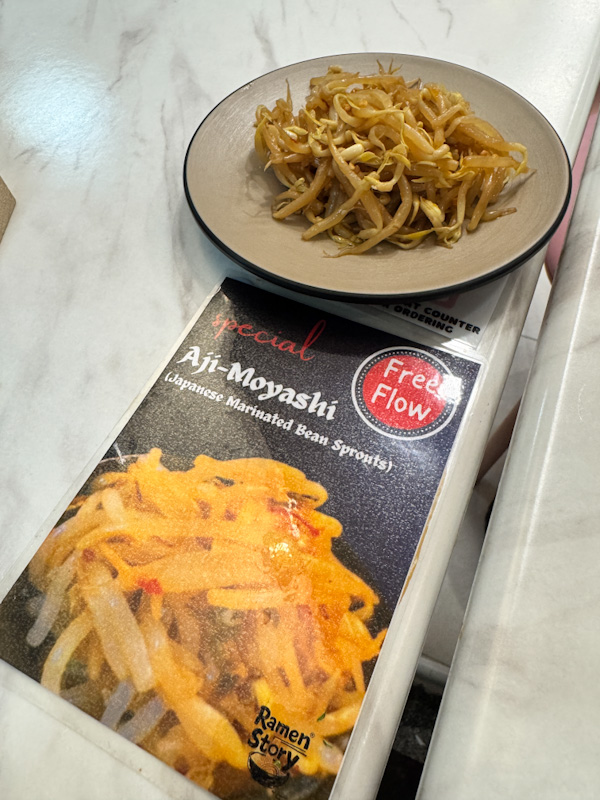
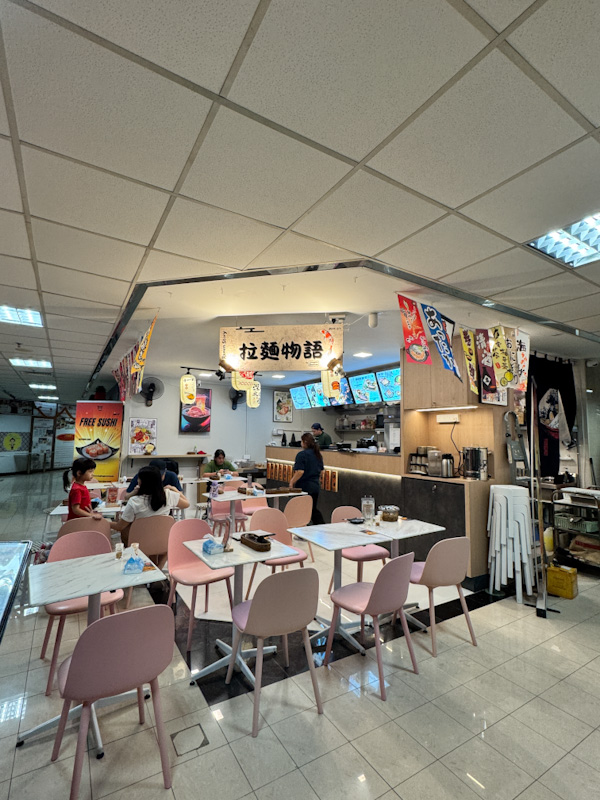
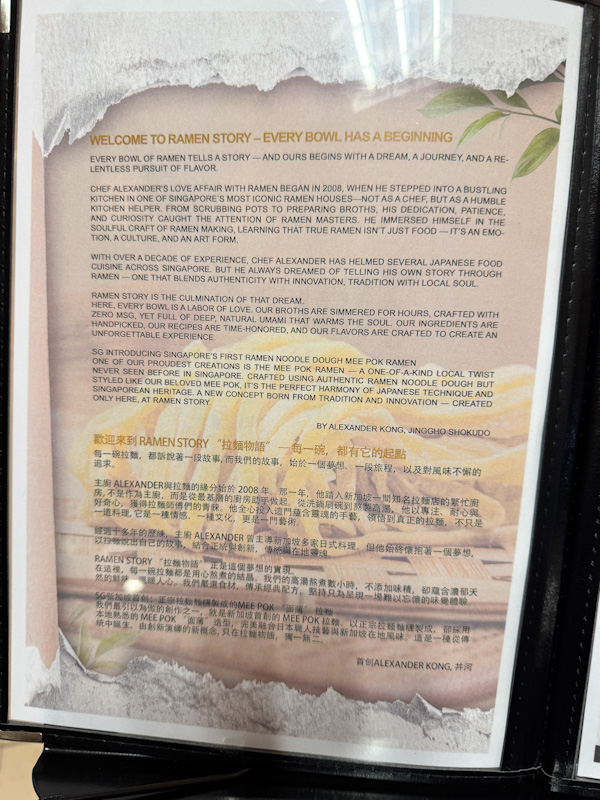
Nestled in Fortune Centre on Middle Road, Ramen Story by Jinggho Shokudo positions itself as more than just another ramen joint. Helmed by chef Alexander Kong, whose journey with ramen stretches back to 2008, the concept is built on blending Japanese craft with a distinctly local soul. What makes it stand out is the introduction of Singapore’s first ramen-meepok hybrid — thick, flat noodles crafted from ramen dough but styled like our familiar mee pok. It’s a deliberate nod to Singaporean heritage, set against the backdrop of a menu that also features bowls like the Black Gold King Ramen and a Shoyu Ramen grand opening special.
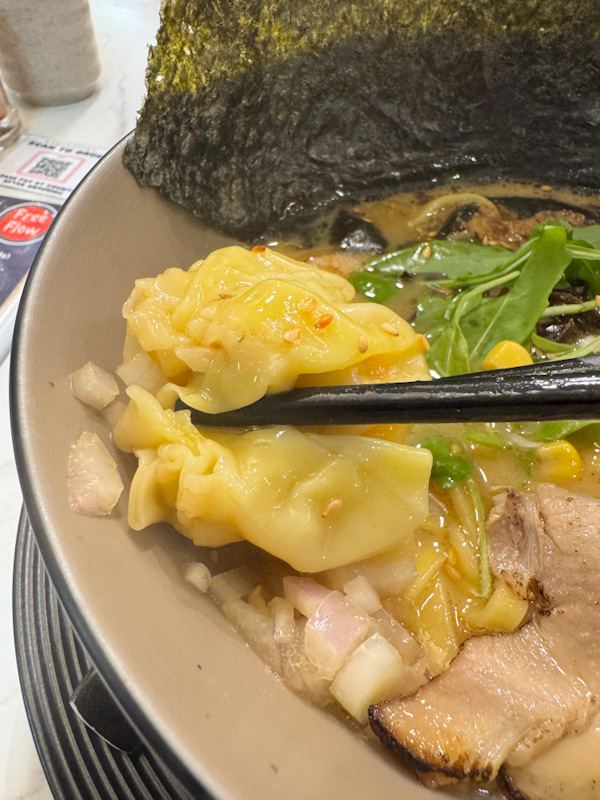
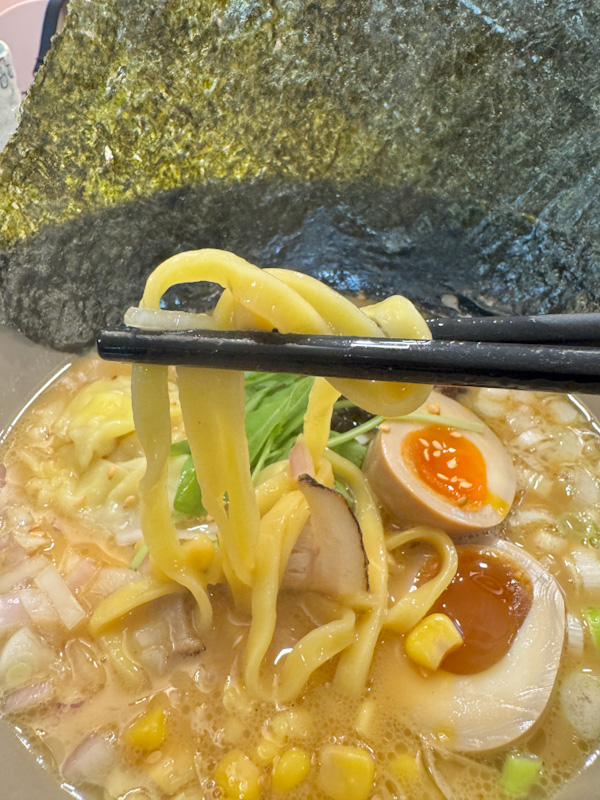
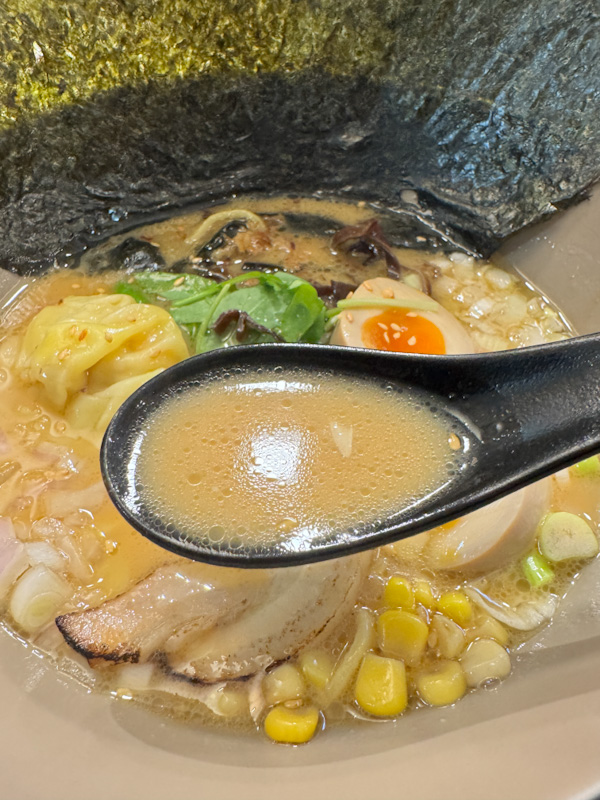
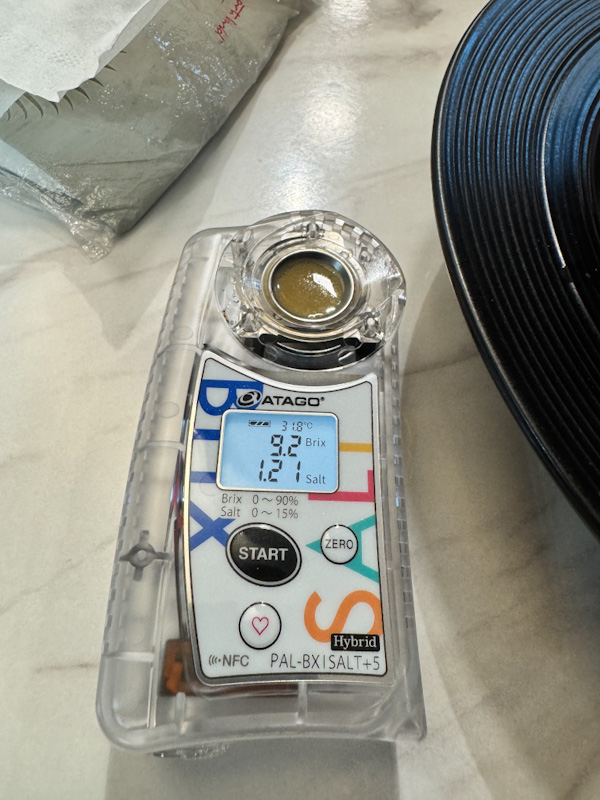
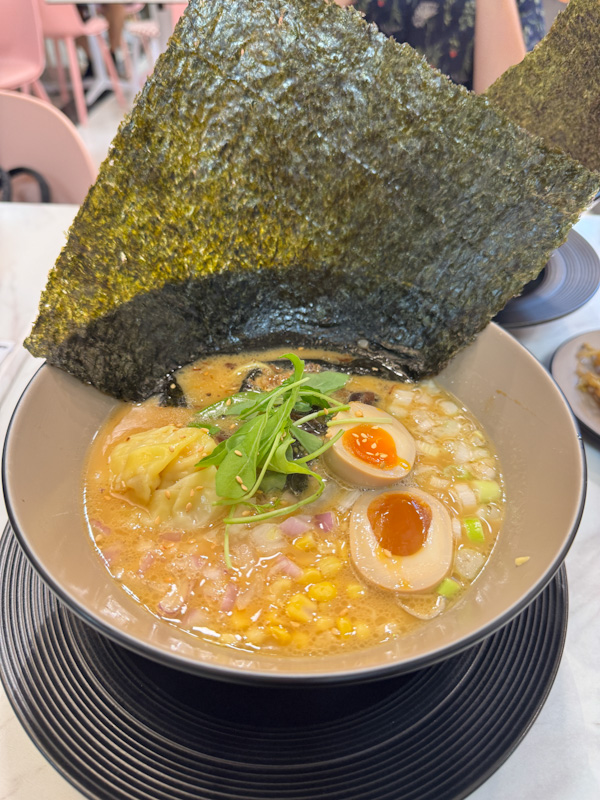
Shoyu Ramen: 75/100
Noodle: 30/35
2 noodle choices are given — Ramen Noodles or Meepok. We picked the latter obviously since the chef’s specialty. At first glance, the noodles immediately stand out — thick, fat, and flat, resembling yellow meepok rather than the usual Japanese strands. The resemblance isn’t superficial either. They carry the same firm springiness and faint squish of meepok, yet avoid the tell-tale alkaline tang that often clings to local hawker versions. The bite is satisfying, with just enough resistance to reward each chew, and they maintain their shape admirably from first slurp to last. Taste-wise, the nutty wheat note is pleasant and steady; if someone had told me this was a fatter cousin of Japanese ramen, I’d believe them.
Soup: 25/35
While the name says Shoyu Ramen — it’s actually more like a Paitan-Shoyu mix. The broth begins on a savoury head, then softens into a gentle sweetness before finishing with a lingering shoyu character. That finish carries a faint bitter tang — the kind of sharpness you sometimes get with darker shoyu — which keeps the aftertaste dry rather than cloying. It’s also not a static broth: the floating bits lend variability, so each sip offers a slightly different burst of flavour. Sometimes piquant, sometimes mellow, occasionally earthy. That shifting complexity keeps things interesting, though it does mean the soup doesn’t quite settle into a fully cohesive arc.
Meat: 10/20
Two distinct proteins anchor this bowl: a slice of chashu and a single dumpling.
- The chashu, cut from pork belly, is sliced thin. Its flavour leans clean and lightly aburi-ed, but the texture works against it — chewy to the point of being borderline tough, lacking the tender melt that a good belly slice should deliver.
- The dumpling, on the other hand, is surprisingly well-executed. Big, juicy chunks of prawn provide both sweetness and crunch, wrapped in a savoury-sweet seasoning that lifts the entire bite. In this case, the dumpling outshines the chashu.
Other Toppings: 10/10
The toppings here are where the bowl truly sings.
- A perfectly timed egg arrives with creamy yolk, strong marination, and just a whisper of bitterness to balance the salt.
- Black fungus adds clean crunch, while corn brings a splash of refreshing sweetness.
- White sesame releases a woodsy, nutty aroma when crushed between teeth
- And both diced onions and negi punctuate the bowl with sharp piquancy.
- A huge sheet of seaweed contributes savoury umami
- Fried leek layers on a burnt-caramel sweetness reminiscent of onions cooked just shy of charred.
- For freshness, rocket leaves are used cleverly — grassy and clean without the bitterness they sometimes carry.
The only outlier is the free beansprouts, marinated in black vinegar. On their own, they’re a sharp and bracing appetiser. But when eaten alongside the ramen, the sourness jarringly interrupts the flow of the bowl.
Summary
The Shoyu Ramen is a steadier bowl that plays to balance rather than bravado. The thick, flat noodles hold up beautifully, offering a firm spring and nutty wheat flavour that carries through the meal. Its broth opens savoury, shifts into gentle sweetness, and closes with lingering shoyu tones edged by a faint bitter tang — not overly complex, but pleasingly layered. Of the proteins, the thin chashu leans chewy and underwhelms, while the prawn dumpling brings sweetness and crunch that steal the spotlight. Where this bowl truly shines is in its toppings: a well-marinated egg, fried leek with burnt-caramel notes, crisp fungus, and fresh rocket all add texture and lift. Altogether, a thoughtful and engaging bowl that finds harmony even if the meat falls short.
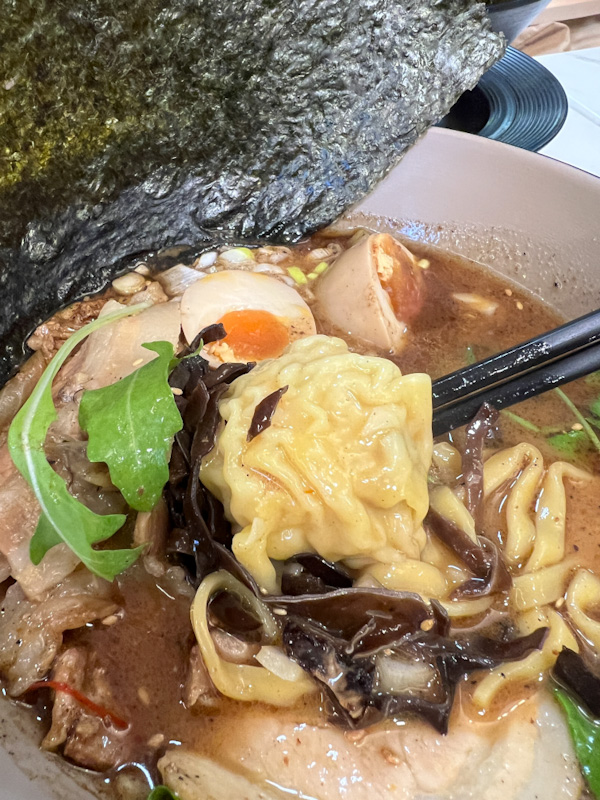
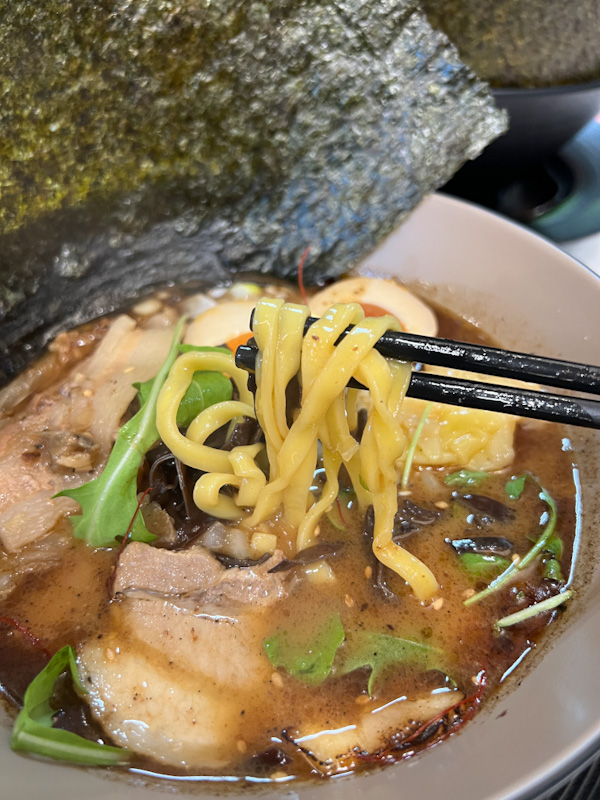
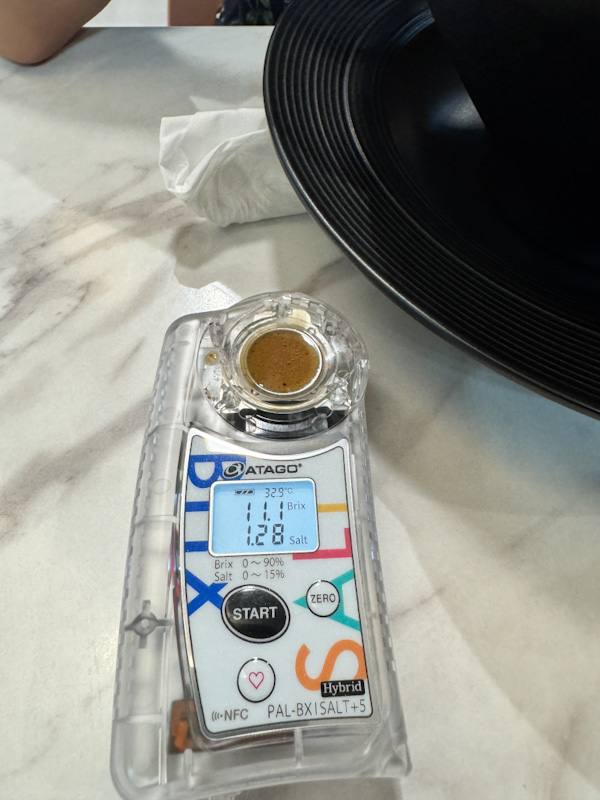
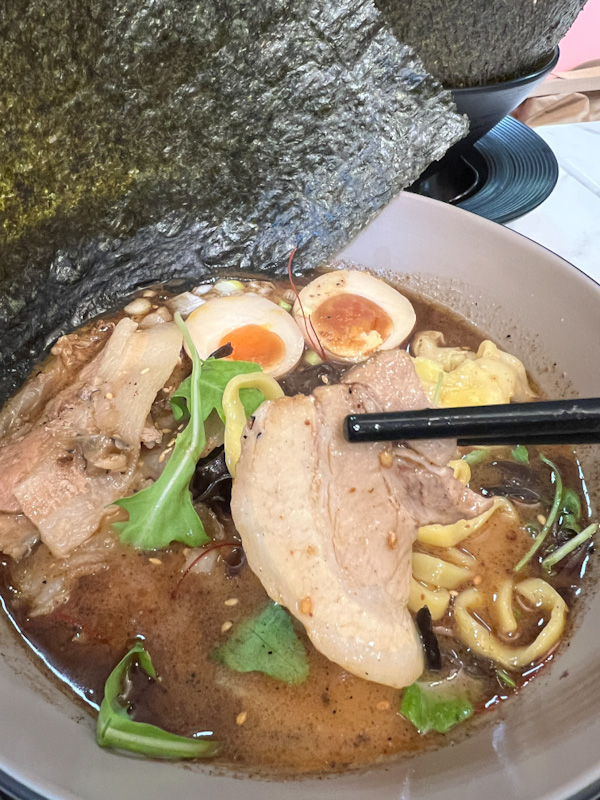
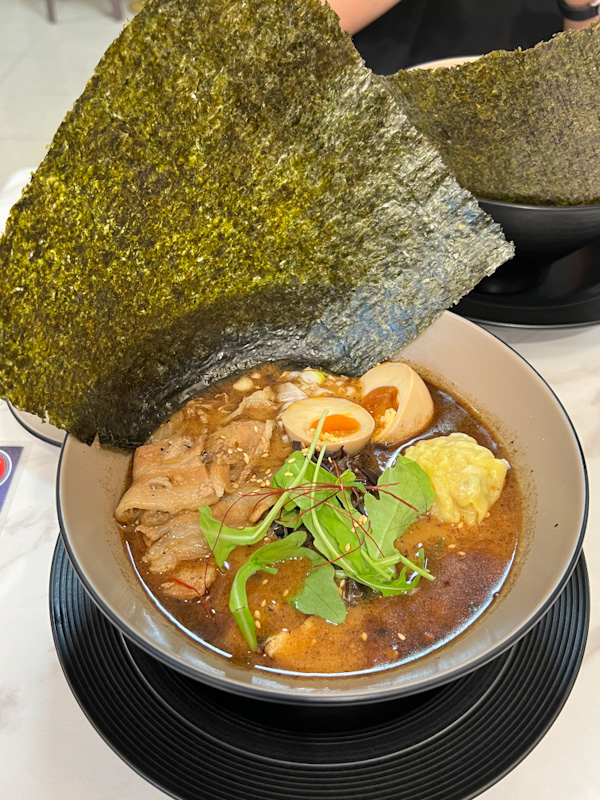
Ramen Black Gold King: 60/100
Noodle: 30/35
The same noodles are used here, and they continue to impress. Thick, fat, and flat, they resemble yellow meepok more than the archetypal Japanese strand. The similarity runs deeper than appearance: they have the same firm spring and faint squish of meepok, but crucially avoid the alkaline tang that hawker noodles often carry. Each bite delivers a measured resistance, satisfying without veering into toughness, and they hold their shape from start to finish. The wheat flavour is steady and nutty, pleasant throughout. If no one had told me otherwise, I might have mistaken these for a plumper, more disciplined cousin of Japanese ramen.
Soup: 15/35
The broth starts with a fleeting savoury-sweet head but quickly veers into an aggressive burn — a compound hit of chilli and pepper. That heat deepens but then flattens, leaving behind a hollow spiciness without much depth. The tail end carries a distinct bitterness, further underscoring that emptiness. The layering here is blunt; once the spice takes over, nuance becomes hard to find. It’s also worth noting that this level of spiciness wasn’t indicated upfront — and for those who don’t enjoy a sharp, enduring burn, it overwhelms the bowl.
Meat: 10/20
Two proteins accompany this bowl: a slice of chashu and a single dumpling.
- The chashu, taken from pork belly, is sliced thin. While it carries a clean pork taste and a light aburi note, the texture is problematic — more chewy than yielding, edging into toughness, and far from the melting tenderness expected of this cut.
- The dumpling is more successful. Plump chunks of prawn deliver both crunch and sweetness, bound together with savoury-sweet seasoning that makes each bite lively. As with the earlier bowl, the dumpling overshadows the chashu.
Other Toppings: 5/10
The toppings echo the previous bowl but don’t integrate as smoothly against this broth.
- The egg is well-marinated, with creamy yolk and a faint bitterness balancing the salt.
- A large sheet of seaweed contributes a welcome savoury lift.
- Ito togarashi (dried red chilli pepper) makes its presence felt — and explains the punishing heat.
- Fried leek brings a burnt-caramel sweetness that contrasts nicely with the spice, though the effect is fleeting.
- Black fungus provides crunch, though it feels more textural than flavourful here.
- White sesame is present but so faint it might as well be absent.
- Rocket leaves, usually grassy and clean, are reduced to mere decoration — too subtle to register in the onslaught of spice.
Overall, the toppings fail to harmonise with the broth’s intensity. The result is a bowl that feels more punishing than pleasurable, and while spice enthusiasts may welcome the heat, most will struggle to find balance or complexity beneath it.
Summary
Its thick, flat noodles are reliably good — springy, nutty, and well-shaped — but the broth falters. What begins as a fleeting savoury-sweet head quickly collapses into a sharp chilli-and-pepper burn, finishing with a hollow bitterness that drowns out nuance. Despite the addition of aburi chashu and a prawn dumpling, only the dumpling manages to stand out, offering juicy sweetness and crunch against the otherwise one-dimensional heat. Toppings like fried leek and egg add brief highlights, but most others fade under the weight of the spice. Overall, it’s a bowl that rewards diners who actively seek a fiery burn.
DISCLAIMER
One man’s meat is another man’s poison.
Find out more about our palettes and how we evaluate our ramen here. 😉

